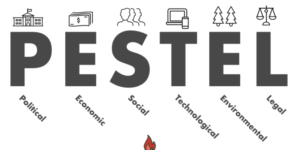Note-taking is a fundamental academic skill that plays a critical role in learning, memory retention, and effective study habits. In higher education, students are often expected to synthesise large amounts of information presented in lectures, seminars, and readings. However, attempting to transcribe every word verbatim is not only impractical but can also hinder comprehension. Instead, efficient note-making strategies, such as the use of symbols and abbreviations, allow learners to capture key points swiftly while maintaining cognitive engagement (James, Jordan & Matthews, 1991). This article explores note-taking strategies like the importance of abbreviations and symbols in note-taking, examines their impact on cognitive processes, and considers practical applications and challenges in academic and professional contexts.
Theoretical Foundations of Note-Taking
Note-taking is not simply a mechanical act of writing; it is a cognitive process that involves selecting, organising, and integrating information (Piolat, Olive & Kellogg, 2005). The act of condensing spoken or written material into a structured form requires active engagement with content, thereby enhancing comprehension and memory consolidation. According to cognitive load theory, the working memory has limited capacity, and effective note-taking strategies help reduce extraneous cognitive load while maximising germane load—the effort devoted to learning (Sweller, 1988).
Research by Kiewra (1989) suggests that structured notes are associated with better academic performance, as they facilitate reviewing and retrieving information more effectively. In this context, symbols and abbreviations serve as cognitive shortcuts, reducing the effort required to capture information and leaving more resources available for understanding and analysing content.
The Role of Symbols in Note-Making
Symbols serve as visual cues that encapsulate meaning in compact forms. They allow students to represent ideas quickly without interrupting the flow of listening or reading. For example, symbols such as “→” to mean leads to or “≠” to signify does not equal are widely used in both scientific and humanities contexts.
Symbols can also function as mnemonics, aiding memory retrieval. According to Paivio’s dual-coding theory, information encoded in both verbal and visual formats is more easily remembered (Paivio, 1991). When learners use symbols alongside words, they create multiple pathways for recall, thereby enhancing learning outcomes.
Moreover, symbols provide a universal shorthand that transcends language barriers. For instance, mathematical operators such as +, −, and ÷ are universally recognised, enabling students from different linguistic backgrounds to understand complex concepts with greater ease.
The Use of Abbreviations in Efficient Note-Taking
Abbreviations are another essential tool for efficient and rapid transcription of lecture material. By condensing common words and phrases into shorter forms, students save valuable time and can focus on comprehension rather than transcription. For instance, abbreviations such as “e.g.” (for example), “i.e.” (that is), “govt.” (government), and “approx.” (approximately) reduce cognitive effort and facilitate faster note-taking.
Academic literature supports this practice. Di Vesta and Gray (1972) demonstrated that students who used abbreviation-based note-taking strategies exhibited better recall compared to those who wrote in full sentences. Furthermore, research highlights that the process of encoding information in a personalised shorthand increases active engagement, thereby promoting deeper learning (Van Meter, Yokoi & Pressley, 1994).
Practical Applications in Academic Contexts
The use of symbols and abbreviations is particularly valuable in lecture-based learning, where information is delivered rapidly. For example, medical students often face the challenge of memorising complex terminology; they rely heavily on abbreviations such as BP for blood pressure or HR for heart rate (Kelley & McLaughlin, 2012). Similarly, engineering students may use arrows, Greek letters, or mathematical shorthand to record problem-solving processes.
Another important context is note-taking from readings. Academic texts often contain dense information. Abbreviations like diff. for difficulty, ref. for reference, or s/t for something help students condense and annotate their reading material quickly.
In professional settings, such as business meetings or legal proceedings, shorthand systems enable practitioners to capture essential details without disrupting workflow. For example, lawyers and journalists often use industry-specific shorthand notations to maintain accuracy while keeping pace with fast-moving discussions (Makany, Kemp & Dror, 2009).
Cognitive and Pedagogical Benefits
- Speed and Efficiency – Abbreviations and symbols significantly increase writing speed, enabling students to keep up with fast-paced lectures (Pauk & Owens, 2010).
- Enhanced Focus – By eliminating the need to transcribe every word, learners can focus on understanding key concepts, fostering critical thinking (Kiewra, 2002).
- Improved Memory – The act of encoding information into shorthand creates stronger memory traces, aiding long-term retention (Boch & Piolat, 2005).
- Organisation of Information – Symbols and abbreviations help structure notes, making them easier to review and revise before exams (Fryer & Marshall, 2020).
- Active Learning – Transforming content into concise forms forces students to interpret and process information, reinforcing comprehension (Weener, 1974).
Challenges and Limitations
Despite the advantages, there are potential limitations to this strategy. Over-reliance on abbreviations can lead to ambiguity and difficulties in revisiting notes later if the shorthand is not clear (Boyle & Rivera, 2012). Moreover, students may struggle to balance listening comprehension with the cognitive load of generating appropriate abbreviations in real time (Titsworth & Kiewra, 2004).
Additionally, some disciplines—such as law or literature—require precise wording. In such cases, abbreviations might distort meaning or omit critical nuances. Educators should therefore encourage students to develop a personalised system of symbols and abbreviations that balances efficiency with accuracy.
Strategies for Effective Use
To maximise the benefits of symbols and abbreviations, the following strategies are recommended:
- Develop a consistent system: Use a standard set of symbols (e.g., → for therefore) across all subjects.
- Combine with structured methods: Integrate shorthand into established frameworks such as the Cornell Note-Taking System or mind maps (Castello & Monereo, 2005).
- Review and expand: After class, students should expand shorthand into full sentences to ensure clarity and reinforce memory.
- Customise abbreviations: Adapt symbols to fit personal learning styles and subject-specific terminology.
- Use technology: Digital note-taking apps allow students to create personalised shorthand libraries, making the process even more efficient (Mueller & Oppenheimer, 2014).
In contemporary education, where information is delivered at high speed and in great volume, symbols and abbreviations serve as invaluable tools for efficient and effective note-taking. By reducing cognitive load, enhancing memory, and promoting active engagement, they enable learners to capture essential information without losing focus on comprehension. However, to avoid misinterpretation, students must use abbreviations consistently and supplement shorthand with full expansions during review. Ultimately, combining symbols and abbreviations with structured note-making strategies can significantly enhance both academic and professional performance.
References
Boch, F. & Piolat, A. (2005). Note taking and learning: A summary of research. The WAC Journal, 16(1), pp. 101–113.
Boyle, J. R. & Rivera, T. Z. (2012). Note-taking techniques for students with disabilities: A systematic review of the research. Learning Disability Quarterly, 35(3), pp. 131–143.
Castello, M. & Monereo, C. (2005). Students’ note-taking as a knowledge-construction tool. Educational Studies in Language and Literature, 5(3), pp. 265–285.
Di Vesta, F. J. & Gray, G. S. (1972). Listening and note taking. Journal of Educational Psychology, 63(1), pp. 8–14.
Fryer, L. K. & Marshall, N. J. (2020). Supporting students’ learning with digital note-taking: A systematic literature review. Computers & Education, 150, 103838.
James, K., Jordan, R. & Matthews, A. (1991). Listening Comprehension and Note-Taking Skills. London: Collins.
Kiewra, K. A. (1989). A review of note-taking: The encoding–storage paradigm and beyond. Educational Psychology Review, 1(2), pp. 147–172.
Kiewra, K. A. (2002). How classroom teachers can help students learn and teach them how to learn. Theory Into Practice, 41(2), pp. 71–80.
Kelley, C. & McLaughlin, J. (2012). Effective use of educational technology in medical education. Medical Teacher, 34(3), pp. e199–e212.
Makany, T., Kemp, J. & Dror, I. E. (2009). Optimising the use of note-taking as an external cognitive aid for increasing learning. British Journal of Educational Technology, 40(4), pp. 619–635.
Mueller, P. A. & Oppenheimer, D. M. (2014). The pen is mightier than the keyboard: Advantages of longhand over laptop note-taking. Psychological Science, 25(6), pp. 1159–1168.
Paivio, A. (1991). Dual coding theory: Retrospect and current status. Canadian Journal of Psychology, 45(3), pp. 255–287.
Piolat, A., Olive, T. & Kellogg, R. T. (2005). Cognitive effort during note taking. Applied Cognitive Psychology, 19(3), pp. 291–312.
Sweller, J. (1988). Cognitive load during problem solving: Effects on learning. Cognitive Science, 12(2), pp. 257–285.
Weener, P. (1974). Note taking as an adjunct to learning from lectures. Journal of Educational Psychology, 66(6), pp. 860–865.









